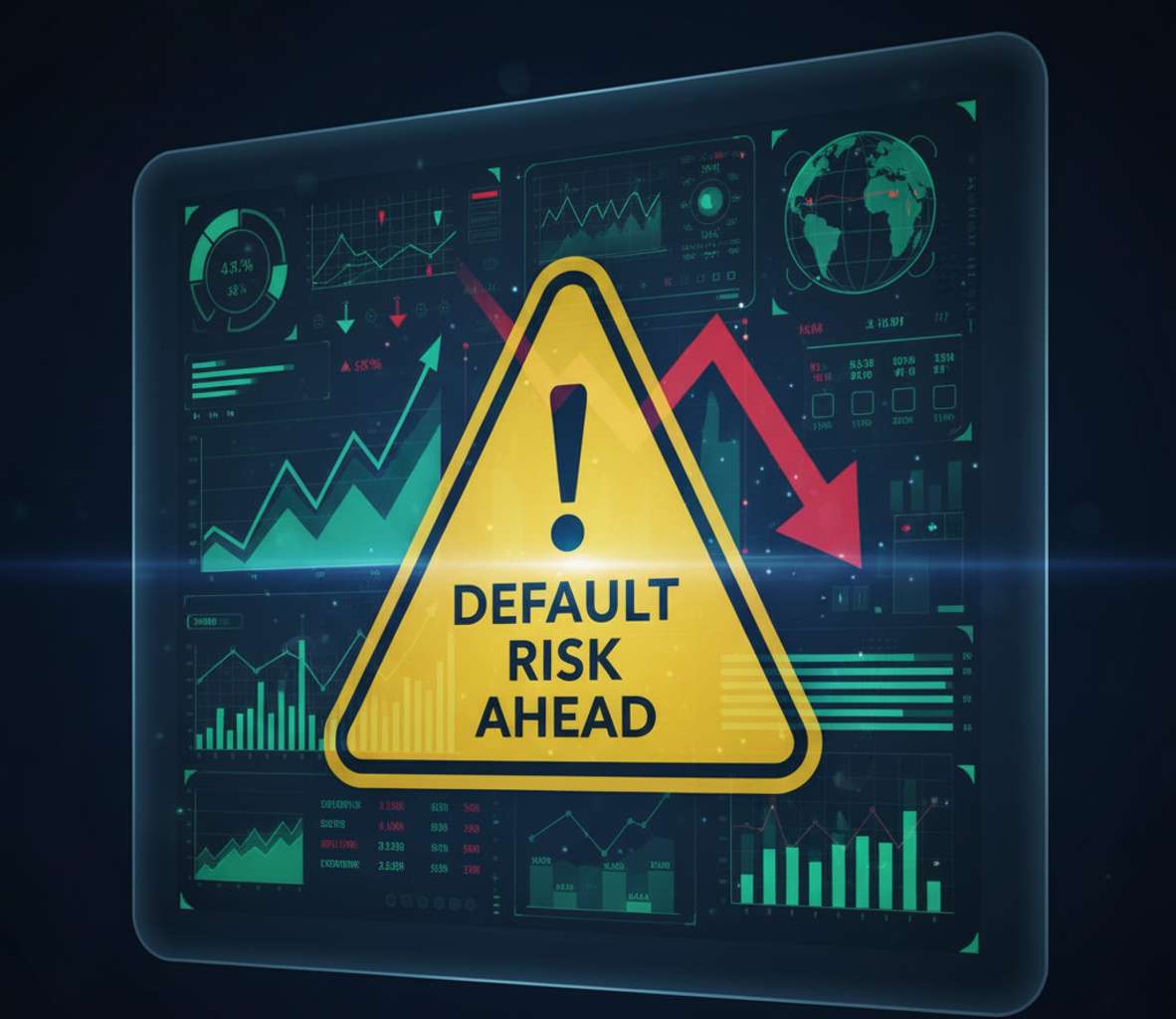Your traditional FD barely beats inflation, and bonds feel too complex. You’re hunting for better returns without diving into the stock market’s wild swings. P2P lending in India offers a middle ground that’s caught many investors’ attention, but choosing the wrong platform can cost you dearly.
This guide is for conservative investors and first-time P2P explorers who want to move beyond traditional options without gambling their hard-earned money. You’ll learn how to separate legitimate peer to peer lending platforms from risky operators that could vanish with your investment.
We’ll walk through a practical P2P lending platform evaluation system that checks regulatory compliance, track records, and transparency measures. You’ll also discover proven default risk management P2P strategies that successful investors use to protect their money while targeting P2P lending returns that actually make sense for your portfolio. Finally, we’ll cover red flags that signal potential defaults before they happen, so you can pull out early and preserve your capital.
Understanding P2P Lending as an Investment Alternative

Higher Returns Compared to Traditional Fixed Deposits
Your traditional fixed deposits and savings accounts are barely keeping pace with inflation, often delivering real returns of 2-4% annually after taxes. P2P lending India platforms offer you the opportunity to earn significantly higher returns, typically ranging from 12-24% per annum, depending on the borrower’s risk profile and loan tenure you choose.
When you invest through peer to peer lending platforms, you’re essentially cutting out the banking middleman. Banks traditionally pay you 3-6% on deposits while lending the same money at 10-15% interest rates. P2P platforms allow you to capture a larger share of this interest margin directly.
Your returns in P2P lending vs FD scenarios show a stark difference. While a ₹1 lakh FD at 6% annual interest grows to ₹1.34 lakhs over 5 years, the same amount in P2P lending at 15% could potentially grow to ₹2.01 lakhs, assuming you reinvest returns and manage defaults effectively.
The higher return potential comes with increased responsibility on your part. You’ll need to actively evaluate borrowers, diversify across multiple loans, and monitor your portfolio regularly – something traditional FDs don’t require.
How P2P Lending Works in the Indian Market
You participate in P2P lending by registering on RBI-regulated platforms that connect individual lenders like yourself with borrowers seeking personal, business, or educational loans. Your investment gets distributed across multiple borrowers to spread risk, with typical loan amounts ranging from ₹25,000 to ₹10 lakhs per borrower.
The process starts when you deposit funds into your P2P platform account. You then review borrower profiles, including their credit scores, income verification, and loan purposes. Most platforms offer you automated investment options where algorithms distribute your money based on your risk preferences and return expectations.
Your loan tenures typically range from 12-36 months, with monthly EMI collections flowing back to your account. The platform handles all loan servicing, including EMI collection, borrower communication, and default recovery processes, charging you a fee of 1-3% of your investment amount annually.
RBI regulations limit your total P2P exposure to ₹50 lakhs across all platforms, with a maximum of ₹50,000 per borrower across all platforms. If your total investments exceed ₹10 lakhs across platforms, you must provide a certificate from a Chartered Accountant confirming a minimum net worth of ₹50 lakhs. These limits protect you from overexposure while allowing meaningful returns on your investment capital.
Key Differences from Bonds and Bank Products
Unlike government or corporate bonds that offer fixed returns with high credit quality, P2P lending exposes you directly to individual borrower default risk. Your returns aren’t guaranteed, and you could lose principal if borrowers default, whereas bonds typically have asset backing or government guarantees.
Bank products like FDs and recurring deposits offer you capital protection through DICGC insurance up to ₹5 lakhs per bank. P2P investments carry no such protection – your returns depend entirely on borrower repayments and the platform’s collection efficiency.
Liquidity represents another major difference. You can break FDs early (with penalty) or sell bonds in secondary markets, but P2P loans typically lock your money for the full loan tenure. Some platforms offer secondary market features, but liquidity remains limited compared to traditional instruments.
| Investment Type | Returns | Capital Safety | Liquidity | Minimum Investment |
|---|---|---|---|---|
| FD | 3-6% | Guaranteed | High | ₹1,000 |
| Government Bonds | 6-8% | High | Medium | ₹1,000 |
| Corporate Bonds | 8-12% | Medium | Low | ₹10,000 |
| P2P Lending | 12-24% | None | Very Low | ₹500 |
Risk-Return Profile Analysis
Historical data from established platforms shows that diversified P2P portfolios can deliver consistent returns of 5-8% net of defaults, making them attractive alternatives to traditional fixed-income investments for investors willing to accept higher risk levels.
Credit risk forms your primary concern – borrowers may default due to job loss, medical emergencies, or business failures. Platform risk adds another layer, where the P2P company itself could face operational challenges or regulatory changes affecting your investments. Default rates typically range from 10-20% annually across different platforms and borrower segments, higher than traditional loans at around 2-3%.
You can manage these risks through diversification strategies. Spreading ₹1 lakh across 100 different borrowers at ₹1,000 each reduces your exposure to any single default. Most successful P2P investors maintain portfolios of 200-500 loans to achieve stable returns despite occasional defaults.
Your expected returns should account for defaults, processing fees, and taxes. If you’re targeting 18% gross returns with 4% default rates and 2% platform fees, your net returns would be approximately 12% before taxes – still significantly higher than traditional alternatives but requiring active portfolio management on your part.
Historical data from established platforms shows that diversified P2P portfolios can deliver consistent returns of 10-15% net of defaults, making them attractive alternatives to traditional fixed-income investments for investors willing to accept higher risk levels.
Essential Criteria for Evaluating P2P Lending Platforms

RBI Registration and Compliance Status
Your first checkpoint when evaluating P2P lending platforms in India should be RBI registration. Since 2017, the Reserve Bank of India mandates that all peer to peer lending platforms must obtain an NBFC-P2P license to operate legally. You can verify this by checking the RBI’s official list of registered P2P lending platforms on their website.
A platform’s compliance status goes beyond just having a license. You need to examine how well they follow RBI guidelines, including maintaining borrower-lender exposure limits, ensuring proper escrow arrangements, and adhering to the ₹50,000 cap per lender across all platforms. Platforms that proactively communicate regulatory updates and maintain transparent compliance records demonstrate their commitment to operating within legal boundaries.
Look for platforms that display their NBFC-P2P license number prominently on their website and provide regular compliance reports. This transparency indicates they’re serious about regulatory adherence and reduces your risk of investing through non-compliant platforms that could face regulatory action.
Platform’s Track Record and Years of Operation
Your investment safety significantly correlates with a platform’s operational history. When choosing P2P lending platforms, prioritize those with at least 3-5 years of active operations in the Indian market. Established platforms have weathered various market cycles and regulatory changes, providing you with valuable insights into their resilience.
Examine their historical performance metrics, including:
- Default rates over time: Track how default percentages have evolved across different market conditions
- Recovery rates: Look at their efficiency in recovering funds from defaulted loans
- Platform stability: Check if they’ve maintained consistent operations without significant interruptions
- Regulatory compliance history: Research any past regulatory issues or penalties
Newer platforms aren’t necessarily bad choices, but they require more careful evaluation since they lack extensive track records. If you’re considering a relatively new platform, ensure they have strong backing, experienced management teams, and robust risk assessment frameworks.
Technology Infrastructure and Security Measures
Your investment data and funds deserve top-tier protection. Evaluate the platform’s technology infrastructure by examining their website’s user experience, mobile app functionality, and overall digital security measures. A well-designed, responsive platform with intuitive navigation often reflects the company’s investment in technology.
Key security features to verify include:
- SSL encryption for all data transmission
- Two-factor authentication for account access
- Regular security audits conducted by third-party firms
- Data backup and recovery systems
- PCI DSS compliance for payment processing
You should also assess their API integrations with banks and payment gateways. Platforms using reputable payment partners and maintaining seamless fund transfer mechanisms reduce your operational risks. Check if they provide real-time notifications, detailed transaction histories, and automated investment features that enhance your user experience.

Transparency in Reporting and Data Disclosure
Transparency separates reliable P2P lending platforms from questionable ones. You deserve access to comprehensive information about loan performance, borrower demographics, and platform statistics. Quality platforms provide detailed dashboards showing your portfolio performance, including current investments, returns earned, and any defaults.
Look for platforms that publish:
| Information Type | What to Look For |
|---|---|
| Default rates | Monthly/quarterly breakdowns by loan categories |
| Recovery statistics | Time taken and success rates for collections |
| Borrower verification | Methods used and rejection rates |
| Platform performance | Overall portfolio health and growth metrics |
Exceptional platforms go further by providing downloadable reports, investment analytics, and market insights. They should clearly explain their loan grading systems, risk assessment methodologies, and collection processes. If a platform is vague about their operations or restricts access to performance data, consider it a red flag.
Fee Structure and Hidden Charges Analysis
Understanding the complete cost structure helps you calculate your actual returns accurately. P2P lending platforms typically charge various fees, and you need to identify all potential costs before investing. Common fee structures include registration fees, platform fees (usually 1-3% of investment), processing charges, and collection fees on defaults.
Create a comprehensive comparison by analyzing:
Direct Costs:
- Platform or service fees (annual or per transaction)
- Payment gateway charges
- Account maintenance fees
- Withdrawal charges
Indirect Costs:
- Collection fees deducted from recovered amounts
- Early withdrawal penalties
- Currency conversion charges (if applicable)
Some platforms advertise low headline fees but compensate through hidden charges. Read their terms and conditions carefully, paying special attention to collection fee structures and any charges applied during default situations. Calculate the effective cost by considering all fees against your expected returns to make informed decisions about platform selection.
The most transparent platforms provide fee calculators and clearly itemized cost breakdowns, helping you understand exactly what you’ll pay throughout your investment journey.
Due Diligence Framework for Platform Selection

Borrower Verification and Credit Assessment Methods
Your success in P2P lending India depends heavily on understanding how platforms vet their borrowers. When evaluating a P2P lending platform, dig deep into their borrower verification process. Look for platforms that conduct comprehensive identity checks, income verification through salary slips or ITR documents, and employment validation.
The best platforms use multi-layered credit assessment models that go beyond traditional credit scores. They analyze bank statements, digital footprints, and social media presence to create detailed borrower profiles. Some platforms even use psychometric testing and AI-driven risk algorithms to predict default probabilities.
Check if the platform integrates with credit bureaus like CIBIL, Experian, or Equifax. This integration allows them to access borrowers’ credit histories and existing debt obligations. Platforms that rely solely on basic documentation without thorough verification pose higher default risks to your investments.
Ask about their internal scoring mechanisms. Quality platforms assign risk grades (typically A to G) to borrowers based on their assessment. This transparency helps you make informed decisions about which borrower segments align with your risk appetite.
Loan Diversification Options Available
Smart P2P lending platform evaluation involves examining diversification features that protect your portfolio. Look for platforms offering auto-invest tools that spread your money across multiple borrowers automatically. This feature saves time while reducing concentration risk.
Check the minimum investment amounts per loan. Platforms allowing investments as low as ₹500-1000 per borrower enable better diversification, especially for smaller investors. You want to spread your money across 50-100+ borrowers rather than concentrating in just a few loans.
Examine the variety of loan categories available. The best P2P lending platforms India 2025 offer diverse options like personal loans, business loans, medical loans, and education loans. Different loan purposes carry varying risk profiles, allowing you to balance your portfolio effectively.
Some platforms provide geographic diversification by allowing investments across different states and cities. Economic conditions vary by region, so spreading investments geographically adds another layer of protection.
Look for tenor diversification options too. Mixing short-term (6-12 months) and medium-term (12-36 months) loans helps manage liquidity needs while optimizing returns.

Platform’s Default Rate History and Trends
Never invest in any P2P lending platform without thoroughly analyzing their default rate history. Request detailed data on portfolio performance over at least the past three years. Look for platforms that transparently publish their default statistics on their websites.
Pay attention to vintage analysis – how loans from different time periods have performed. A platform might show low current defaults, but older loan batches could reveal concerning trends. Quality platforms provide cohort-wise performance data showing how loans originated in specific quarters have matured.
Compare the platform’s claimed default rates with industry benchmarks. Be skeptical of platforms claiming unrealistically low default rates below 2-3%. Peer to peer lending platforms typically see default rates between 10-20% depending on borrower segments.
Watch for seasonality patterns in defaults. Some platforms experience higher defaults during specific months due to bonus cycles, festival seasons, or economic factors. Understanding these patterns helps you time your investments better.
Check if the platform distinguishes between technical defaults (temporary payment delays) and actual write-offs. This distinction gives you a clearer picture of permanent capital loss versus temporary cash flow issues.
Customer Support Quality and Responsiveness
Your P2P lending platform evaluation must include testing their customer support quality before committing significant funds. Start with simple queries through different channels – email, phone, chat, and social media responses.
Time their response rates. Quality platforms respond to emails within 24 hours and have live chat or phone support during business hours. Slow responses indicate potential issues when you need urgent help with your investments.
Test their knowledge depth by asking complex questions about default procedures, recovery processes, and tax implications. Support teams should provide accurate, detailed answers rather than generic responses.
Check their grievance redressal mechanism. Look for platforms with clear escalation procedures and dedicated relationship managers for higher-value investors. The presence of an ombudsman or independent grievance officer adds credibility.
Read online reviews and social media comments about their customer service. Pay special attention to how they handle complaints about delays, defaults, or platform technical issues. Platforms that respond professionally to negative feedback demonstrate maturity.
Visit their office if possible, especially for large investments. Meeting the team face-to-face and seeing their operations firsthand provides valuable insights into their professionalism and stability.
Monitor their communication during crisis situations. How platforms handled customer concerns during COVID-19 lockdowns or economic uncertainties reveals their true support quality when it matters most.
Smart Risk Management Strategies for P2P Investments

Portfolio Diversification Across Multiple Platforms
Spreading your P2P lending investments across multiple platforms significantly reduces your risk exposure. When you put all your money on just one platform, you’re essentially betting everything on that platform’s borrower screening process, recovery mechanisms, and business stability. This concentrated approach can backfire if the platform faces regulatory issues or if its default rates spike unexpectedly.
Your diversification strategy should involve selecting 3-4 well-established P2P lending platforms in India with different borrower profiles and risk assessment methodologies. For instance, you might allocate funds to one platform focusing on salaried borrowers, another specializing in SME lending, and a third targeting students or professionals. This approach ensures that economic downturns affecting one sector don’t devastate your entire P2P lending portfolio.
Consider allocating no more than 30-40% of your total P2P investments to any single platform. This percentage allows you to benefit from each platform’s strengths while protecting yourself from platform-specific risks. Track how each platform performs over time and adjust your allocation based on their default rates, recovery efficiency, and overall reliability.
Setting Optimal Investment Limits per Borrower
Your investment limits per borrower should reflect both your risk tolerance and the platform’s maximum exposure rules. RBI regulations cap individual investor exposure to any single borrower at ₹50,000 across all platforms. However, you don’t need to max out these limits. However, you don’t need to max out these limits.
A practical approach involves investing no more than 2-5% of your total P2P portfolio in any single borrower. If you have ₹5 lakhs allocated to P2P lending, limit yourself to ₹10,000-25,000 per borrower. This ensures that even if a borrower defaults completely, the impact on your overall returns remains manageable.
Pay attention to borrower concentration across platforms too. Some borrowers might be active on multiple platforms simultaneously, increasing their overall debt burden. While platforms are supposed to check for this, you should also diversify across different borrower risk grades within each platform.
![]()
Regular Monitoring and Performance Tracking
Your P2P lending success depends heavily on consistent monitoring rather than a set-it-and-forget-it approach. Create a monthly review schedule to track key performance indicators across all your investments. Focus on metrics like actual returns versus projected returns, default rates by platform, recovery rates, and cash flow patterns.
Develop a simple spreadsheet or use portfolio tracking tools to monitor:
- Platform-wise performance: Compare actual returns with promised rates
- Borrower payment patterns: Identify late payment trends early
- Recovery rates: Track how well platforms handle defaults
- Cash flow timing: Monitor when payments arrive and plan reinvestments
Watch for early warning signs like increasing late payments, platform communication gaps, or sudden changes in lending criteria. These signals often precede larger problems. Set up alerts or reminders to check your investments at least twice monthly, as P2P lending requires more active management than traditional FDs or bonds.
Exit Strategy Planning for Underperforming Investments
Having clear exit criteria helps you avoid emotional decision-making when investments turn sour. Define specific triggers that prompt you to reduce or eliminate exposure to particular platforms or investment types. These might include default rates exceeding 20%, recovery rates dropping below 60%, or platforms facing regulatory scrutiny.
For individual loans showing signs of distress, most platforms offer secondary markets where you can sell your loan portions to other investors, typically at a discount. While you’ll take a loss, cutting your losses early often beats waiting for complete defaults. Monitor which loans are consistently late and consider exiting before they turn into write-offs.
Create different exit scenarios based on your overall P2P performance. If your portfolio’s returns drop below FD rates for two consecutive quarters, you might reduce new investments and let existing ones mature. If platform-specific issues arise, having predetermined criteria helps you act quickly rather than hoping problems resolve themselves.
Plan your exit timing around your broader financial goals too. Since P2P investments have varying maturity periods, coordinate your exit strategy with your liquidity needs and overall investment portfolio rebalancing requirements.
Identifying and Mitigating Default Risk Warning Signs

Red Flags in Borrower Profiles and Applications
Your ability to spot problematic borrowers starts with examining their financial documentation. Look for incomplete salary slips, bank statements with irregular income patterns, or employment letters from companies that are difficult to verify. When you see borrowers with multiple existing loans, especially from other P2P lending platforms, this signals over-leveraging that increases default risk significantly.
Pay attention to credit scores below 650, though some P2P lending platforms in India may accept borrowers with scores as low as 600. Cross-check the stated monthly income against the loan amount requested – debt-to-income ratios above 40% should raise immediate concerns. Borrowers who provide vague reasons for needing funds or request amounts that seem disproportionate to their income profile often present higher risks.
Watch for inconsistencies between different documents. If employment details don’t match across forms, or if the borrower’s stated expenses seem unrealistically low compared to their lifestyle indicators, these discrepancies suggest potential misrepresentation. Geographic red flags include borrowers from regions with historically higher default rates or areas experiencing economic downturns.
Age demographics also matter in your risk assessment. Very young borrowers (under 25) without established credit history and older borrowers (above 55) approaching retirement may present different but equally concerning risk profiles for P2P lending default risk management.
Platform-Level Risk Indicators to Watch
Your platform selection should focus on transparency metrics that many investors overlook. Check if the platform publishes real-time default rates, not just cumulative historical data. Platforms that only show “projected returns” without detailed breakdowns of actual performance across different risk categories are hiding crucial information you need.
Examine the platform’s loan approval rates – quality P2P lending platforms in India maintain strict standards to ensure careful screening. Quality P2P lending platforms India maintain stricter standards. Look for platforms that provide detailed borrower analytics, including employment sector distribution, average loan tenure, and geographic spread of their loan book.
Warning signs include platforms that frequently change their fee structures, delay investor withdrawals, or show sudden spikes in marketing spending while default rates climb. If customer service responses become slower or less detailed about specific queries, this often indicates operational stress.
Check the platform’s capital adequacy and whether they maintain adequate provisioning for defaults. Platforms that don’t clearly explain their collection processes or recovery mechanisms may struggle when defaults spike. Your due diligence should include verifying whether the platform has proper insurance coverage and regulatory compliance with RBI guidelines for peer to peer lending platforms.

Economic Factors Affecting Default Rates
Your investment timing significantly impacts your P2P lending returns India experience. During economic downturns, default rates typically spike 2-3 months after the initial economic shock. Monitor leading indicators like unemployment rates in major cities, especially in sectors where your borrowers are concentrated.
Seasonal patterns affect different borrower segments uniquely. Salaried employees in government jobs show lower default rates during bonus months (March-April), while small business owners face higher stress during monsoon months when business activity slows. Agricultural sector downturns can impact borrowers in tier-2 and tier-3 cities even if they’re not directly involved in farming.
Interest rate changes by the RBI create ripple effects across P2P lending platforms. When traditional lending rates rise, riskier borrowers migrate to P2P platforms, potentially degrading the overall borrower quality. Conversely, when rates fall, better-quality borrowers might refinance elsewhere, leaving platforms with higher-risk portfolios.
Industry-specific factors play crucial roles in default risk management P2P strategies. IT sector layoffs, real estate market slowdowns, or changes in government policies affecting specific industries can dramatically impact default rates within 60-90 days. Your portfolio diversification should account for these sector-specific vulnerabilities.
Recovery Mechanisms and Collection Processes
Your protection against losses depends heavily on understanding each platform’s collection efficiency. Top-performing platforms recover an average of 55% of defaulted amounts within the first year, while poorly managed ones recover less than 20%. Ask platforms for detailed recovery statistics broken down by time periods and loan amounts.
Legal recovery processes vary significantly across platforms. Some maintain in-house legal teams, while others outsource to collection agencies. Platforms with dedicated legal departments typically achieve better recovery rates, especially for higher-value defaults. Your platform evaluation should include understanding their legal network’s geographic coverage and success rates.
Technology-driven collection approaches often yield better results than traditional methods. Platforms using AI-powered prediction models can identify potential defaulters 30-45 days before they actually default, enabling proactive intervention. Look for platforms that employ multiple communication channels and graduated collection strategies rather than jumping straight to legal action.
Recovery timelines directly impact your actual returns. Platforms that recover funds within 6-12 months provide better investor experiences than those taking 18-24 months. Some platforms offer buyback guarantees or provision funds to protect investors, but understand these mechanisms thoroughly – they’re not always as protective as they appear. Your risk assessment should factor in the platform’s track record of honoring these guarantees during stress periods.
Also Read : Top P2P lending Platforms and Apps in India
Maximizing Returns While Minimizing Exposure

Strategic Asset Allocation Between P2P and Traditional Investments
Your investment portfolio needs balance, and P2P lending platforms in India should complement rather than replace your traditional investments. Smart allocation means dedicating no more than 5-10% of your total investment portfolio to peer to peer lending initially, gradually increasing to 15-20% as you gain experience and confidence in specific platforms.
Think of P2P lending as your portfolio’s growth accelerator. While your FDs and bonds provide stability with 6-8% returns, P2P investments can deliver 12-18% annually when managed properly. Your allocation strategy should consider your risk appetite, investment timeline, and existing asset mix.
Create a tiered approach where you maintain your core holdings in traditional instruments – keep 60-70% in proven assets like equity mutual funds, government securities, and corporate bonds. Allocate the remaining portion between P2P lending and other alternative investments based on your comfort level.
Recommended Allocation Framework:
- Conservative investors: 5% P2P, 95% traditional investments
- Moderate investors: 10-15% P2P, 85-90% traditional investments
- Aggressive investors: 15-25% P2P, 75-85% traditional investments
Rebalance your allocation quarterly. If P2P returns exceed expectations, resist the urge to dramatically increase exposure. Conversely, if defaults rise, temporarily reduce your P2P allocation until market conditions stabilize.
Timing Your Investments for Better Returns
Your entry and exit timing significantly impacts P2P lending returns. Unlike traditional investments, peer to peer lending offers unique timing opportunities that savvy investors can exploit.
Start investing during economic stability when default rates typically remain low. Avoid major investments during economic uncertainty, recession fears, or immediately after significant policy changes that might affect borrower behavior.
Deploy your P2P investments gradually through systematic investment plans rather than lump sums. This dollar-cost averaging approach helps you navigate interest rate fluctuations and reduces timing risk. Spread your investments across 3-6 month periods to capture different market conditions.
Optimal Investment Timing Strategies:
- Begin fresh investments at month-end when platforms often have better loan options
- Avoid investing heavily during festival seasons when default rates may spike
- Consider seasonal patterns – agricultural loan defaults often increase during crop failure periods
- Monitor RBI policy announcements that might affect lending rates
Your reinvestment strategy matters equally. When loans mature, don’t immediately reinvest the full amount. Assess current platform performance, default trends, and your overall portfolio needs before committing fresh capital.
Watch for platform-specific patterns. Some P2P lending platforms offer better loan grades during specific periods or months. Track these patterns over 6-12 months to optimize your investment timing.
Tax Implications and Optimization Strategies
Your P2P lending returns face different tax treatment than traditional investments, making tax optimization crucial for maximizing after-tax returns. Interest income from peer to peer lending platforms gets taxed as ‘income from other sources’ at your applicable income tax slab rates.
Unlike bank FDs where TDS gets deducted, most P2P platforms don’t deduct tax at source. You’re responsible for declaring this income and paying taxes during filing. This creates cash flow advantages but requires disciplined tax planning.
Tax Optimization Techniques:
- Maintain detailed records of all P2P investments and returns
- Set aside 30% of your P2P gains for tax payments if you’re in the highest tax bracket
- Consider spreading investments across financial years to manage tax liability
- Offset P2P gains against capital losses from other investments when possible
Plan your P2P investment timing around your annual income fluctuations. If you expect lower income in certain years due to career breaks or business cycles, time your P2P maturities to coincide with these lower-income periods for reduced tax impact.
Keep separate accounts for P2P investments to simplify tax calculations. Download monthly statements from all platforms and maintain spreadsheets tracking your investment dates, maturity dates, and returns received.
Remember that defaults don’t automatically qualify for tax deductions. Only write-offs specifically acknowledged by platforms may be eligible for tax treatment, subject to current regulations. Consult tax professionals for complex situations involving significant P2P portfolios or multiple platform investments.
Consider investing through legal structures like HUF (Hindu Undivided Family) if applicable, which might offer different tax treatment based on your specific circumstances and family structure.

P2P lending offers you a genuine opportunity to diversify your investment portfolio beyond traditional fixed deposits and bonds, but success depends entirely on your platform selection and risk management approach. By carefully evaluating platforms based on their regulatory compliance, track record, and transparency levels, you can significantly reduce your exposure to potential losses. Remember to spread your investments across multiple borrowers and platforms, maintain a healthy cash reserve, and always start small until you understand how each platform operates.
Your journey into P2P lending doesn’t have to be overwhelming if you stick to the fundamentals. Focus on platforms with strong due diligence processes, clear fee structures, and responsive customer support. Most importantly, never invest money you can’t afford to lose, and treat P2P lending as just one component of your broader investment strategy. With the right preparation and ongoing monitoring, you can potentially earn higher returns than traditional instruments while keeping your risk levels manageable.
Also Read : Wills vs Nominations: Who Truly Inherits Your Wealth?
Disclaimer: This article is for educational purposes only and should not be considered financial or investment advice. P2P lending involves a high degree of risk, including possible loss of principal. Readers should conduct their own due diligence and consult a SEBI-registered financial advisor before investing. The author and website are not responsible for any financial losses arising from investment decisions based on this content.


